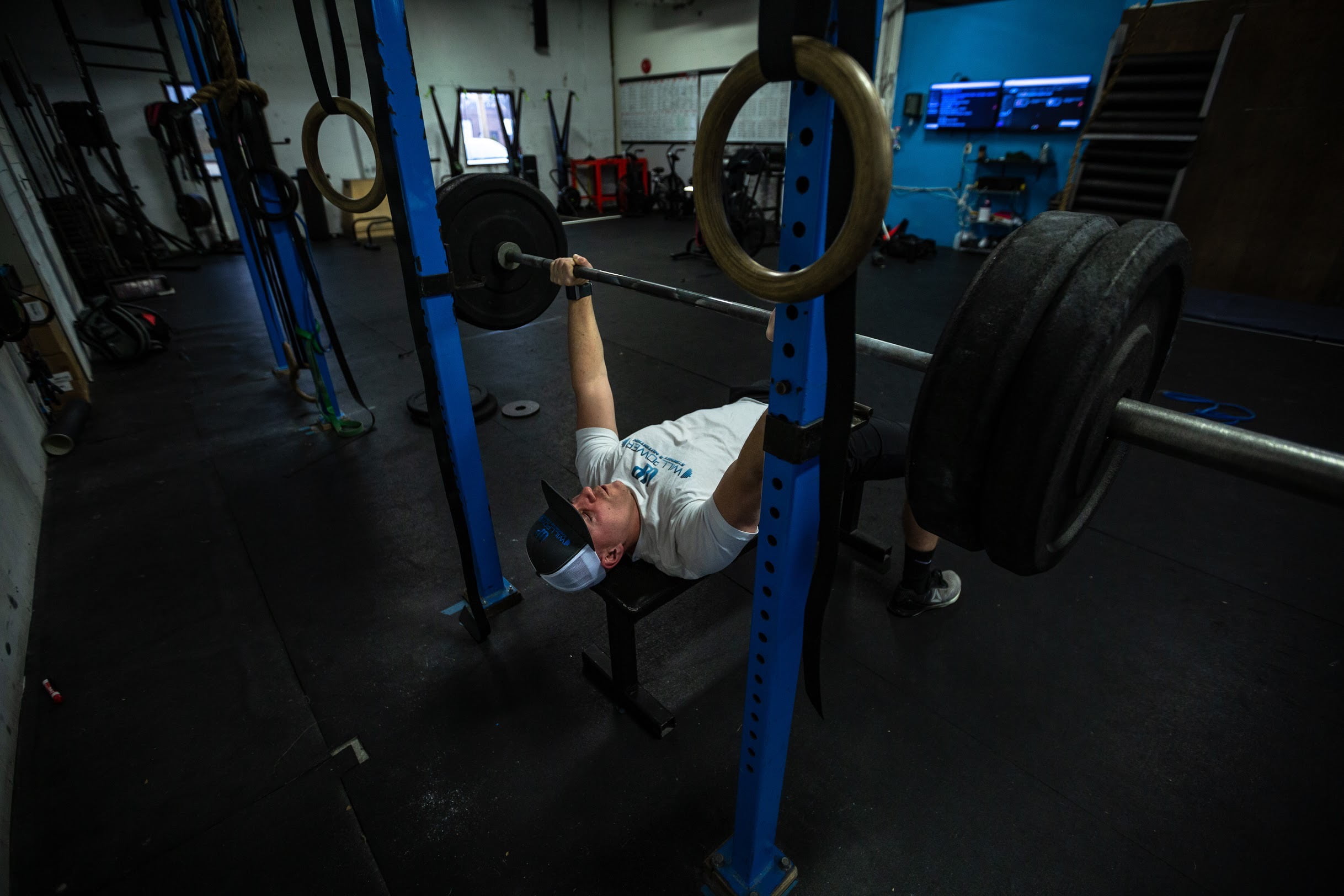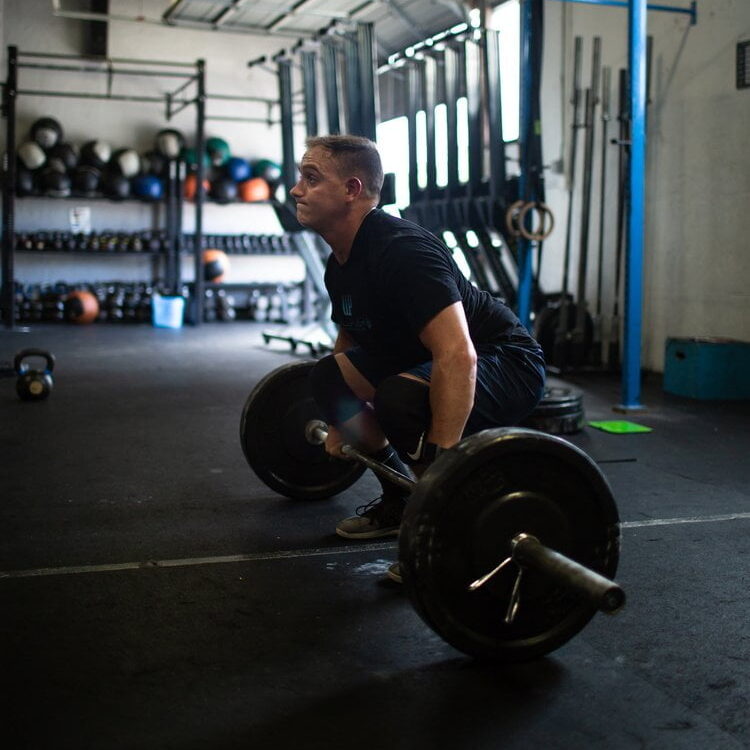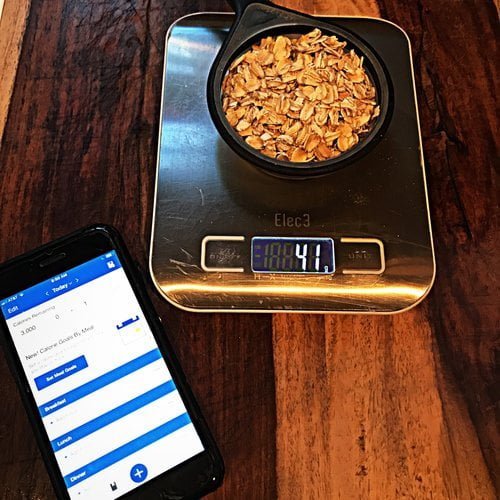Mastering Your CrossFit Strength Training: Upper Body
As a Performance Physical Therapist and CrossFit coach for over a decade I have come to realize that building upper body strength as a CrossFitter is critical for various reasons. Most CrossFit movements in CrossFit WODs (workout of the day) will incorporate some level of upper-body component. As such, those with the most upper body strength will perform the best for that given workout.
Some of CrossFit’s most common exercises including handstand push-ups, push jerks, bench presses, ring dips, etc will require a robust amount of upper body strength to perform at a high level. If you lack upper body strength, you will be forced to break up the required repetitions of the workout and watch other stronger athletes move past you on the leaderboard.
If your goals don’t include competing but you want to build as high a fitness level as possible for life then developing a significant amount of upper body strength can be just as important.
For those who want to use CrossFit as an effective way to look good, move better, and perform great in the sport of life, then proper strength training is a great way to build functional prowess, pack on muscle, and improve your physique while also helping to eliminate injuries in and outside of the gym.
In today’s blog post, we will dive into the best ways that you can build upper body strength for CrossFit, the process behind building overall strength, discuss common pitfalls to strength training in CrossFit, and provide practical examples of strength-building techniques that will fit nicely within your current CrossFit workout routine.
What Are The Best Upper Body Strength Workouts For CrossFit?
There is no “best” upper body strength workouts for CrossFit. But there are “best” practices in when it comes to building strength in the upper body.
When I design training programs for clients inside of my 1:1 Pain-Free Performance Program, the number one aspect I am considering is the demands of the activities they will be doing. Some of my clients are CrossFit Athletes, some are rehabbing from injury, and some want to be as fit as possible, look great, and stay injury-free.
Compared to more traditional strength training methods such as Powerlifting or Olympic weightlifting, the strength demands of CrossFit and functional fitness aren’t challenged in isolation where a set is performed, and there is a long time to rest.
Strength for CrossFit will typically be required as a part of a metabolic conditioning piece where the movement is paired with another movement, and muscle strength will have to be maintained for the duration of the session.
For example:
10-Minute AMRAP
10 Push Jerk 155/105
20 Wall Ball Shots 20/14 to 10/’9′
400m Run
You can see how, although someone will need great strength and proper form for the Push Jerk, they will also need a robust amount of muscle endurance will also be required to maintain that strength throughout the session.
Your performance will suffer if you are unaccustomed to these kinds of strength demands. Improve. Thus, different ways of training can be deployed to promote improvements in upper body strength but also generate fatigue on the system to more closely resemble what traditional CrossFit WODs require so that you can build strength and capacity simultaneously.
Upper Body Strength Building Techniques
When designing strength training, it is essential to know the process behind how improvements in upper body strength are made. Strength is a neurologic adaptation at the level of the central nervous system. It involved increasing the number and efficiency of individual motor units that can receive signals from the brain to elicit a muscular contraction.
Once you go from a novice trainee to intermediate and advanced training, this nervous system adaptation becomes more efficient, and to continue to drive improvements in strength, you will need to build more muscle mass. This process is called “Hypertrophy,” where the muscle enlarges due to increases in the number and size of Myofibrils, the contractile unit of a specific muscle. As well as increases in fluid or sarcoplasm within the muscle fiber.
Below are different ways you can design your upper body strength training workouts to keep your sessions fun and engaging and as effective as possible to improve the efficiency of your nervous system and drive increases in muscle size.
Traditional Sets
Traditional strength-building techniques involve performing a set number of reps for a predetermined number of reps, followed by a rest period. This kind of strength training for upper body strength should be the bread and butter of your exercise as it is simple and brutally effective.
It is also straightforward to progress week to week as you add weight, tempo, or decrease rest to continue challenging the nervous system and muscles to drive improvements in strength.
Ex
5 sets for load
5 Overhead Press
– rest 2 min –
Supersets
Supersets are training techniques that involve using two different exercises and performing them back to back for a set number of reps,n followed by a defined amount of seconds of rest before beginning the next exercise.
I love programming supersets in training because they can provide an increased challenge to the session but are also great for minimizing the amount of time you spend in the gym if you are someone who needs quick sessions.
Choose two opposing exercises, such as a push and pull. It can be an effective way to build muscle strength since the non-working muscle group can have a chance to rest and recover while you perform the different movements.
You can also choose two compound exercises involving the same pattern. Doing so is less effective for building upper body strength. Still, your goals also include bigger arms and a better physique. In that case, it can be one of the best ways to do so since it maximizes muscle breakdown through a longer total time under tension.
Ex (opposing movements)
3 sets for load
10 Bench Press
10 Weighted Pull Ups
– rest 2:00 –
Ex (same specific muscle groups)
3 sets of load
10 Ring Dips
10 Overhead Press
– rest 2:00 –
Tri-Sets
Tri-sets are very similar to super sets in that they involve more than one compound exercise with a set amount of seconds of rest between each of them. The difference lies in the number of exercises you will perform and the number of angles specific muscles can be challenged.
As the name implies, you will select three different exercises for tri-sets versus the two for super sets. Tri-sets are a great way to keep workouts short and effective, as you get a lot of work done quickly. Still, since there are multiple movements to get through, each pattern can recover even more to allow the use of heavier weights.
Tri-sets also allow you to attack specific muscle groups from different angles if your goal is building upper body muscle and strength. You can see an example of this kind of multi-angle muscle training below.
Ex (different movements)
3 sets for load
5 Bench Press 80% of 1 rep max
8 Barbell Row
10 Handstand Push Ups
– rest 1 min –
Ex (multi-angle)
3 sets of load
10 Ring Push-ups
10 Ring Dips
10 Dumbbell Pec Fly
– rest 1 min –
Giant Sets
Giant sets are another training technique that utilizes several different exercises sandwiched together as a great way to get a lot of excellent strength training combined with an element of conditioning in not much time.
This strength training technique will involve four or more exercises for various reps and sets. For giant sets, I will typically program roughly sixty seconds of rest between exercises and then several minutes of rest between sets.
This is because of how much work you do per set with giant sets. Thus, the nervous system benefits from a more extended rest before starting the next round to handle the increased load. Which ultimately will translate to increased upper body strength over time
When designing giant sets, it is a good idea to front-load the compound exercises that use the most weight and lowest reps at the beginning of the set and transition to exercises like bodyweight exercises or single-joint exercises that require less load and more reps.
This is the best way to promote proper form and keep the load high enough.
Ex
5 sets for load
5 weighted strict pull-ups
8 handstand push-ups
10 Push Ups
:60 Plank in a push-up position
– rest 1 min / 2 min –
Drop Sets
Drop sets can overload specific movements or muscle groups using a single exercise. The technique begins by performing a set for several reps, bringing you close to failure.
Once this point is reached, weight is removed from the barbell, a lighter pair of dumbbells is selected, and performing near-maximal reps begins again. There is no specific amount of times this should be repeated, but up to five weight reductions are adequate before the proper form is not adhered to for the movement.
Although drop sets can be used to build some upper body strength, they are primarily used for creating muscle mass due to the significant repetitions and fatigue in the specific muscles involved. These are best positioned at the end of the workout as a finisher.
Ex
5 sets for max reps (-1); stop before failure
Barbell Bench Press 80%,70%, 60%, 50%, 40%
– no rest between sets –
Cluster Sets
Cluster sets are a type of strength training where you will perform a set of a given movement, rest briefly, and repeat another set. These “sets within the set” are called clusters.
Clusters are an effective way to build maximal strength but also sneak in a decent amount of relative volume for the exercise. The brief rest period between clusters allows the nervous system and specific muscles to quickly recover to perform another set at a higher load than usual.
For example, you may only be able to strict press 100 pounds for six reps without stopping. But, if you were to strict press 110 pounds, perform three reps, rest for thirty seconds, and then perform another three reps, you effectively performed six reps at a higher load. Which, over time, will promote more significant increases in top-end strength.
Ex
3 sets for load
:30 between clusters
Weighted Dips (dip bar) 5.5.5
– rest 2 min –
Wave Loading
Wave loading is a spin on the more traditional strength training methods where a single compound exercise is performed, followed by a set amount of rest before repeating the same exercise.
With wave loading, the number of reps you will perform per set will decrease, and the load will increase. This allows for a progressive increase in the stimulus of the movement to drive improvements in upper body strength while creating more exciting workouts.
Wave loading can also start with higher loads and repetitions and decrease repetition number and weight with each set; however, that is more suitable to muscle building vs strength building as it more closely resembles drop sets.
Ex
Each set for load
6, 4, 2, 6, 4, 2
Push Jerk
– rest 2 minutes –
Common Pitfalls In Building Upper Body Strength For CrossFit
If your goal is to build a robust level of upper body strength to crush your metcons or grow bigger arms, shoulders, and pecs to show off during the summer, there is a right way.
Below are some common pitfalls to building strength I have seen for CrossFitters that I help my 1:1 Pain-free Performance Program clients avoid.
Disregarding Your Training Age
Your training age is critical to consider when designing your strength training program. This goes back to the beginning of the article, where I mentioned how building strength is a function of central nervous system coordination.
Your training age is the amount of time in years you’ve spent performing purposeful and pattern-based strength training.
As you begin strength training, you will need more frequent exposure to strength training stimuli to improve the nervous system’s ability to coordinate muscle contractions to produce force.
Since folks new to strength training can’t produce much force, they can recover from their work more quickly.
The more advanced you get, the less exposure you will need because the nervous system becomes so good at producing force.
Weights become so heavy that more time is required to recover and adapt to the work you did.
Novice: if you are new to strength training, the best option is to use full-body strength training to maximize exposure to resistance exercise each week.
This would use multiple different movement patterns for the upper body to build upper body strength. These would include horizontal pushing and pressing as well as vertical pushing and pressing.
Intermediate: If you are past the novice stage but are still building your strength levels to the advanced stage, you will want to deploy split training days with a specific focus each day.
For example, you may perform upper-body strength training two days per week and lower-body strength training two days per week.
This allows you to keep the frequency at a moderate level and focus on specific body regions to maximize the loading of your workouts and the nervous system’s response to your training.
Advanced: The most advanced stage of strength training will call for a lower frequency of strength training because the nervous system is so effective at producing force.
At this stage, you will have more of your training devoted to accessory work to build muscle mass and prevent injury since the weights you can use for compound exercises like bench press and strict press are so high they become extremely taxing to the system.
Too Much Fatigue Based Strength Training
This is a common one with CrossFitters, as we are so used to doing everything with a high heart and breathing rate. Rightfully so, as this kind of work makes up most of the training methodology.
But, if you want to maximize your upper body strength gains, you’ll want to avoid too much systemic fatigue so that your nervous system and muscles can put everything they have into producing force.
I mentioned several techniques above that incorporate fatigue in strength training. Still, it is essential to note that there is a difference between local muscle fatigue to drive hypertrophy and systemic fatigue from metcons due to the total work done.
Prioritizing Single Joint Over Multi Joint
The best way to build upper body strength is by using exercises like the bench press, strict press, pull-up, barbell row, and push jerk, which involve multiple joints and muscles.
These exercises allow you to handle the most weight, engage most amount of muscle mass, and provide the most significant hormonal response to strengthen you’re body as quickly as possible.
Single-joint exercises like bicep curls and skull crushers can build your triceps and biceps and support the bigger movements.
Still, they should be seen as accessories to compound exercises as they don’t produce the same response from the body.
Not Valuing Rest Times
This is similar to the pitfall of strength training under fatigue. Still, even when strength training is not done inside a metcon, it is essential to value the rest times between sets. Rest times allow your nervous system and muscles to recover to perform the next set as proficiently as possible.
When not enough rest time is taken between sets, you won’t be able to use weights that are heavy enough to improve strength, and you won’t be able to use good form as the muscles become fatigued.
As a general rule of thumb for strength-building exercises, you will want 3-5 minutes of rest between sets and 30-:90 between sets for muscle-building exercises.
The Wrap-Up!
A lot goes into building upper body strength for CrossFitters, and there are many ways to do so based on your specific needs, training age, and unique goals.
Building upper body strength in CrossFit will help you compete at a higher level as you can more easily and quickly perform gymnastic movements like ring dips, muscle ups, and handstand push-ups. But it can also help you build muscle and strength to optimize your functional fitness and aesthetics.
These concepts are the same ones I use to design training programs for clients in my 1:1 Pain-Free Performance Program, where I help Fitness Athletes train without pain and elevate their fitness level.
To learn more about my coaching services, please click this LINK to claim your 100% risk-free consultation!
Related reading:
The Best Program For Building Strength In CrossFit
Treating Rotator Cuff Tendinitis with Strengthening
5 Best Belt Squat Machines For Training With Back Pain







